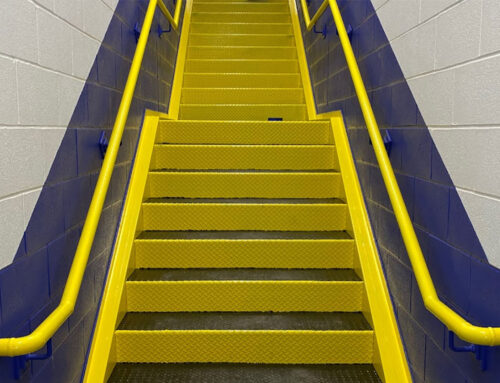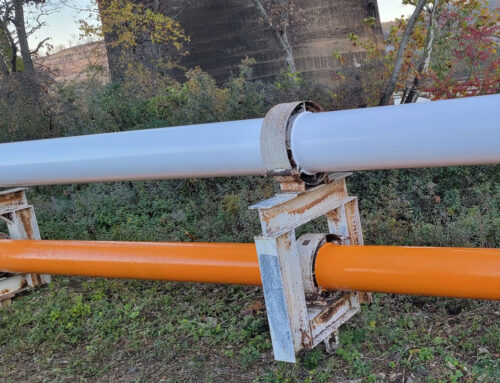Hot-dip Galvanizing vs. Metallizing: Pros and Cons
Hot-dip galvanizing, an alternative to metallization, involves submerging a steel structure into a vat of molten zinc, which has been heated to more than 800 degrees. The steel and zinc form a metallurgical bond. The dipped substrate is then lowered into a quench tank, allowing the zinc to cool and the galvanization process to continue. The result is a uniform, thick, typically mottled coating.
This cost-effective method protects against corrosion, just like metallizing does, representing a well-suited method for infrastructure projects, steel towers, guardrails and handrails, safety ladders, and signage. In the following post, we’ll compare the two methods, highlighting the pros and cons of each. Read on to learn more.
Substrate Compatibility
Metallizing works with a plethora of substrates because the process occurs at lower temperatures. The high temperatures involved in hot-dip galvanizing only realistically make it a coating option for steel and iron.
Uniformity
Hot-dip galvanizing provides a more uniform coating than metallizing. The coating will almost always be thicker. However, due to the immersion and subsequent drainage, the process doesn’t allow industrial painters strict control of coating thickness. Metallizing does allow industrial painters to control the thickness of the coating being applied.
Repairability
Small touchups are part of maintaining the long-term health of any coating. That’s easier to do with metallized coatings.
Surface Preparation
Metallizing requires more surface preparation than hot-dip galvanizing. It’s common for industrial painters to do abrasive blasting to remove debris and rust prior to metallizing. Before hot-dip galvanizing, industrial painters will degrease the substrate. They’ll remove superficial contaminants by immersing the surface in an acidic bath and then applying a dry powdered flux.
Environmental Impact
Hot-dip galvanizing consumes more energy than metallizing, primarily because it takes so much fuel to heat up the zinc bath. It will release zinc vapor emissions and create zinc dross as a byproduct. The quenching water, used for cooling down the galvanized substrate, becomes waste. Most galvanizing facilities have strict policies for treating wastewater, recycling or disposing of dross, and filtering emissions.
Despite some of the waste, emissions, and byproducts hot-dip galvanizing creates, it does have some environmental advantages. Namely, the coating from hot-dip galvanizing lasts a long time, reducing the need for repairs and new coating.
Metallizing is generally considered to have greater environmental advantages than hot-dip galvanizing and other coating methods because it uses only a specific amount of powdered or wire metals.
Complex Shapes
It’s difficult to lower a complex shape into a molten zinc bath. As a result, industrial painters prefer metallizing as a coating option for non-symmetrical components.
Corrosion Causes Shutdowns. Schedule Your On-Site Inspection with Eagle Eye Services Today.
Don’t let corrosion, erosion, and cavitation ruin your industrial equipment. Processes like hot-dip galvanizing and metallizing can protect your equipment–and your business–from shutdowns, profit losses, and compliance issues.
To get started, contact the industrial painters at Eagle Eye Services and schedule an on-site inspection. Our team will assess the damage and select an appropriate metallization or hot-dip galvanizing method.
You may also be interested in:
Ready to Get Started?
Have questions about your project or need a quote? We’ve got someone ready to help you.



